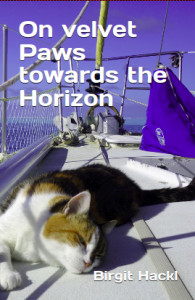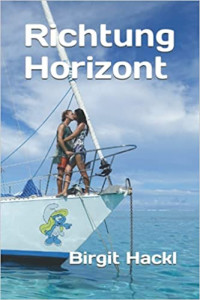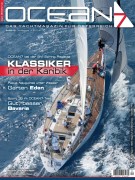During our second stay in Taravai we anchored in the southern bay, because we wanted to visit the few families who live here. We did several dinghy excursion, were received with Polynesian hospitality, talked to the people and heard lots of interesting stories.
There’s an abandoned village on the eastern side of the island. Only one family lives here als caretakers. Herve and Valerie maintain the church and the houses and take care of the gardens. They’re happy to have visitors, we were invited for a cup of tea and as they both speak good English (a rarety here) it was informative talking to them and by far less demanding than our usual efforts in bad French mixed with mime. There used to be a real village here, but during the last 25 years the population slowly moved to Mangareva, drawn there by the possibility to make money with pearlfarming. Only on the weekends some of them come here. Valerie teaches their two kids herself using French material and she’s also an artist: she uses the multicoloured sand of the island to make pictures with traditional motives. They’re happy in their little paradise and only take their boat to Rikitea to go shopping–they think it’s too hectic and noisy in town (Rikitea has less than 1000 inhabitants  ). We brought a book for the older son and cookies for the younger one and left loaded heavily with fruit and veggies.
). We brought a book for the older son and cookies for the younger one and left loaded heavily with fruit and veggies.
A bit outside the village we met Didier, a French cruiser who came here 10 years ago on a rusty steel boat. He stayed, got a house, the boat slowly dissolved, but now he’s got a new one and plans on going cruising again. Didier’s dog accompanied him on his journeys, enjoyed life on Taravai, but now he’s 18 years old, can barely walk anymore and so Didier waits with his departure until his long-time companion leaves on his own journey to doggy-heaven.
Edouard and Denise have cleared some land in the south of the island and have built a pretty house there, where they live with their little granddaughter. I call out ‘Enakoto! Peeakoto’ (Hello, how are you?) as we land the dinghy, eager to use my newly acquired Mangarevan vocabulary (Valerie taught me some phrases). Denise only shakes her head and answers in French–she’s from the Tuamotus and speaks Tahitian, also a polynesian language, but very different. We write into their guestbook, buy a necklace made of shells and head back to Pitufa with the dinghy filled up with basil, mint and rosemary.
The house of Herve’s aunt stands on the little island Agakauitai south of Taravai. Auntie only visits ocassionally, the three permanent residents live underneath the house: three piggies who run out squealing and grunting when a dinghy arrives. After a short period of uncertainty it became clear that they’re not aggressive but happy to have visitors. They want to be scratched behind their ears and have their bellies stroked.
Strong winds out of the northeast put an end to our excursion. The island protects us from waves, but the wind howls in short gusts around the cape and down from the mountains. First it’s perfectly calm, then the wind howls towards us with up to 50 knots, beats up the spray from the crests of the chop, spins Pitufa’s bow around and pushes her on the side only to calm down a few minutes later. The situation’s uncomfortable, but not dangerous, as we have 70 metres of chain out and a very trustworthy anchor. We use the calm weather that follows the northerly wind to move back to Mangareva.










